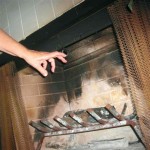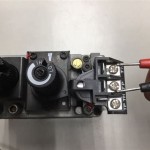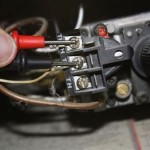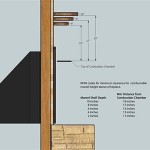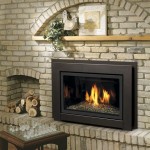Modern Ventless Gas Fireplaces: A Comprehensive Overview
Ventless gas fireplaces, also known as unvented gas fireplaces, have become increasingly popular in modern homes. They offer a convenient and aesthetically pleasing alternative to traditional wood-burning fireplaces and vented gas models. Their defining feature is the absence of a chimney or venting system, which simplifies installation and allows for placement in locations where traditional fireplaces would be impractical or impossible. This article will explore the key aspects of modern ventless gas fireplaces, including their functionality, benefits, considerations, and safety features.
The operability of a ventless gas fireplace is relatively simple. The unit combusts natural gas or propane to generate heat. Unlike vented fireplaces, the combustion byproducts, including water vapor and small amounts of carbon monoxide, are released directly into the room. To mitigate potential risks associated with these byproducts, ventless fireplaces are equipped with oxygen depletion sensors (ODS). These sensors constantly monitor the oxygen levels in the room. If the oxygen level drops below a predetermined threshold, the ODS automatically shuts off the gas supply to the fireplace, preventing the buildup of dangerous gases.
Key Benefits of Ventless Gas Fireplaces
Ventless gas fireplaces offer several advantages over traditional fireplace options. One of the most significant benefits is the ease of installation. Because there is no need for a chimney or venting system, these fireplaces can be installed in virtually any room in a home. This flexibility opens up possibilities for adding a fireplace to spaces where it was previously impossible or prohibitively expensive. This ease of installation also translates to lower overall installation costs, as it eliminates the need for extensive construction work.
Another advantage is their high energy efficiency. Ventless fireplaces are designed to transfer almost 100% of the heat they generate directly into the room. This is in contrast to vented fireplaces, where a significant portion of the heat is lost through the chimney. The superior energy efficiency can translate into lower heating bills, especially in situations where the fireplace is used as a supplemental heating source. They are also typically equipped with thermostats that allow for precise temperature control, further enhancing their energy-saving potential.
Finally, modern ventless gas fireplaces offer a wide range of aesthetic options. They are available in various styles, sizes, and finishes, allowing homeowners to find a unit that perfectly complements their existing décor. From traditional log sets to contemporary glass media, there are many choices available to customize the appearance of the fireplace. Some models even offer features such as remote controls and adjustable flame heights, adding to their convenience and visual appeal.
Important Considerations Before Installation
While ventless gas fireplaces offer numerous benefits, it is crucial to carefully consider certain factors before installation. One of the most important considerations is room size. Ventless fireplaces are designed to operate safely in adequately sized rooms with sufficient ventilation. Using a fireplace in a room that is too small can lead to the buildup of combustion byproducts and potentially pose a health risk. Manufacturers typically specify the minimum room size requirements for each fireplace model, and these requirements should be strictly adhered to.
Another important consideration is the existing ventilation in the home. Although ventless fireplaces do not require a traditional chimney, proper ventilation is still essential. It is recommended to open a window or door slightly while the fireplace is in operation to ensure adequate airflow. This helps to prevent the buildup of carbon monoxide and other potentially harmful gases. In addition, homes with poor overall ventilation, such as those that are tightly sealed for energy efficiency, may not be suitable for ventless gas fireplaces.
Local building codes and regulations should also be taken into account. Some jurisdictions have restrictions on the installation and use of ventless gas fireplaces. It is essential to check with the local building department to ensure that the installation complies with all applicable codes and regulations. This may involve obtaining permits and inspections to ensure that the fireplace is installed safely and correctly.
Safety Features and Maintenance
Modern ventless gas fireplaces are equipped with a variety of safety features to minimize the risk of carbon monoxide poisoning and other hazards. As mentioned earlier, the oxygen depletion sensor (ODS) is a critical safety component that automatically shuts off the gas supply if the oxygen level in the room drops too low. In addition to the ODS, many fireplaces also have built-in carbon monoxide detectors that provide an audible alarm if dangerous levels of carbon monoxide are detected. These detectors should be tested regularly to ensure they are functioning properly.
Regular maintenance is also essential for ensuring the safe and efficient operation of a ventless gas fireplace. The fireplace should be inspected periodically for any signs of damage or wear. The burner should be cleaned regularly to remove any debris or buildup that could affect its performance. It is recommended to have the fireplace professionally inspected and serviced at least once a year to ensure that all components are functioning correctly and that there are no potential safety hazards.
One of the aspects of maintaining a ventless gas fireplace revolves around ensuring the burner is clean. A dirty burner can cause incomplete combustion, leading to increased levels of carbon monoxide. Cleaning the burner typically involves removing the log set or glass media and using a brush or vacuum cleaner to remove any debris or soot. The pilot light should also be inspected to ensure it is burning cleanly and efficiently. If the pilot light is yellow or orange, it may indicate a problem with the gas supply or the burner, and professional servicing may be required.

Ventless Gas Fireplace Vent Free Modern

Ventless Gas Fireplace Vent Free Modern

Best Vent Free Ventless Fireplaces To Buy In 2024 Fireplace Gas
:max_bytes(150000):strip_icc()/ventless-gas-fireplaces-4160746-hero-f9d4bdcd9bd446eb84406de306f790ba.jpg?strip=all)
How To Pick Out A Ventless Gas Fireplace

Vent Free Archives SÓlas Contemporary Fireplaces

Modern Ventless Gas Fireplaces Blaze

Monessen Solstice Contemporary Vent Free Gas Insert Mount Airy Oil Company

Ventless Gas Fireplace Vent Free Modern

Modern Ventless Electric Fireplaces Tagged Natural Gas Wood Majestic

Superior 55 Contemporary Linear Vent Free Gas Fireplace Vrl3055 Us

